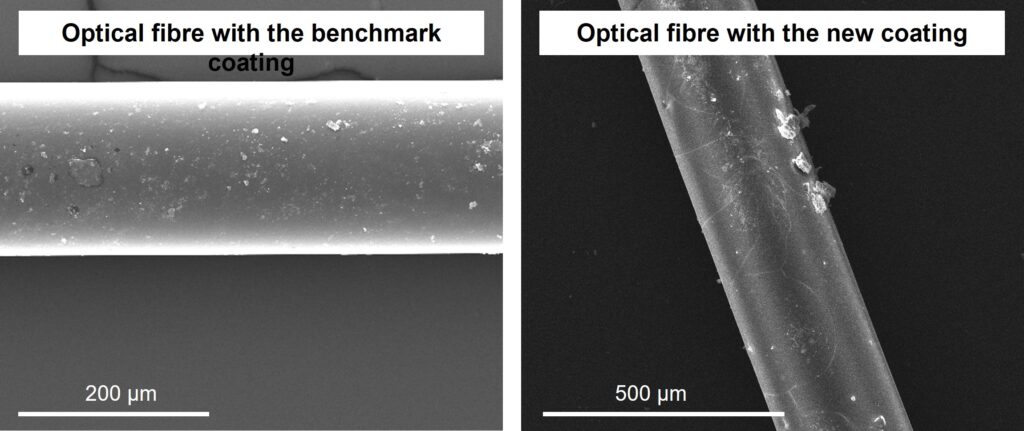Completed: High temperature optical fibre coatings for next generation gas emission monitoring
In collaboration with the University of Southampton, IS-Instruments, University of Newcastle, Glass Technology Services, Breedon and Wienerberger
Real-time gas emission monitoring with high sensitivity (ppm) is a prerequisite to the step-changes necessary in UK Foundation Industries (FIs) for reductions in environmental emissions and energy consumption to achieve net zero. Current emissions monitoring techniques impose limitations to efficiency, detection limits and detectable gaseous species. We have been developing a new gas-Raman instrument capable of near-to-real-time, reliable detection of a wide range of gaseous species of key interest to FIs (H2O, CO, CO2, NOx, SO2, HCl, HF, NH3, VOCs). This device can be implemented across all FIs and other sectors requiring real-time emission monitoring. By enabling real-time monitoring, the collected data can be fed back into process control, to continuously optimise process parameters, optimising fuel use and minimising CO2 emissions. Efficient environmental sensors could save ≈0.26 million TJ/year of energy across all energy-consuming sectors which is equivalent to ≈15 Mt of CO2 globally.

This project aimed to increase the TRL of the developing gas-Raman technology by examining and ranking a number of optical fibre coatings based on their high temperature (≥ 200°C) performance, ease of handling / application, chemical stability and flow behaviour. A thorough literature review was conducted at the beginning of the project to provide a summary of the common optical fibre coatings used for adverse conditions across different industries. This review has been published in the Progress in Organic Coatings journal, Volume 180, July 2023. Based on this review, four UV-curable acrylate coatings were selected as potential candidates. The flow behaviour and the thermal performance of all four coatings were characterised and compared against the benchmark coating to select the most suitable for the present application of interest.
Our findings have enabled our collaborators at the Optoelectronics Research Centre, University of Southampton, to pilot manufacturing hollow-core fibres for high temperature applications (Figure above). This is a great step towards developing a heat-resistant hollow core optical fibre as a key component for the gas-Raman instrument and there remains large scope to continue this collaboration beyond the frameworks of HiT OFCs.
Publications
From acrylates to silicones: A review of common optical fibre coatings used for normal to harsh environments, https://doi.org/10.1016/j.porgcoat.2023.107557

Dr. Ronak Janani Ronak.Janani@shu.ac.uk
Sheffield Hallam University
Published: September 23rd, 2022
Posted in
projects





